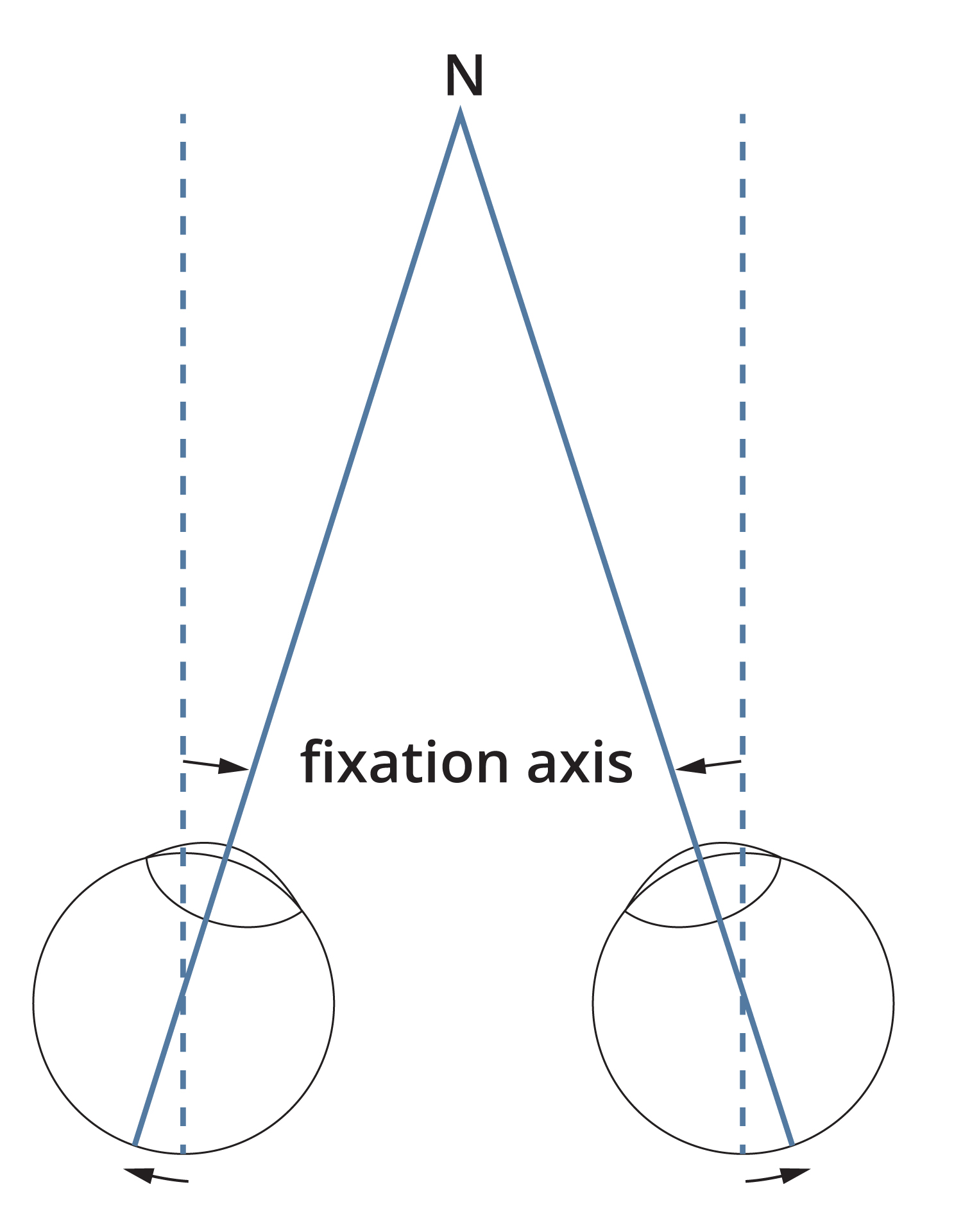Near pupillary distance measurement
Introduction
Near pupillary distance is influenced by distance PD and working distance. Also convergence is important value. If the patient’s PD is larger he has to more converge on particular main working point (MWP). In this way also increased the distance and near PD difference.

Goals
- Measure near PD (PDN) with help of spectacle’s demo-foil
- Measure near PD (PDN) with mirror method
- Measure near PD (PDN) with digital PD-meter
- Calculate near PD (PDN) from infinity-converged PD (PDD)
Equipment
Hand PD ruler, mirror with fixation target, digital PD-meter, special pencil on plastic, spectacle frame with demo-foil
Methods
Measure near PD (PDN) with help of spectacle’s demo-foil
Patient tries spectacle frame with demo-foil. Find where patient’s main working point (MWP) is. In this point place your head. Ask patient to fixate your nose and mark the centers of the patient’s pupil on spectacle’s demo-foil. After that with hand PD ruler measure right PD, left PD and total PD at near.
Measure near PD (PDN) with mirror method
Use mirror placed between patient and examiner. In the middle of the mirror draw fixation symbol (cross). This cross should be placed in the patient’s main working point (MWP). Further with help of mirror reflex draw marks on the patient’s demo-foil. With your right eye draw mark on patient’s right eye and so on. Finally with the ruler measure right PD, left PD and total PD.
Measure near PD (PDN) with digital PD-meter
Measure PD with digital PD-meter. At first set the main working point (MWP). Further put the instrument on patient’s nose and set the instrument’s vertical lines on patient’s corneal reflex on OD and OS. From the digital PD-meter you can finally read right PD, left PD and total PD.

Calculate near PD (PDN) from infinity-converged PD (PDD)
Calculate the change of the distance PD to near PD. Calculate each eye separately, i.e. PDNP for the right eye and PDNL for the left eye. Use lower formula.

PDN – near PD, PDD – distance PD, a – MWP distance, d – vertex distance, distance between cornea and spectacle lens, 13 – [mm], distance from cornea to eye rotation point
Results
Measure near PD (PDN) with help of spectacle’s demo-foil on distance 40 cm.
PDNP =
PDNL =
PDN =
Measure near PD (PDN) with mirror method
PDNP =
PDNL =
PDN =
Measure near PD (PDN) with digital PD-meter
PDNP =
PDNL =
PDN =
Calculate near PD (PDN) from infinity-converged PD (PDD)
PDNP =
PDNL =
PDN =
Discussion
Near PD measurement is important for centering spectacle for near. If we centre spectacle lenses according to near PD we don’t change convergence demands on eye pair. But in some patients is better to change this convergence demands.
Conclusion, notes, comments
How differ measurements of particular methods?
Which method is fastest to perform?
Which method is most exact?
Which method would you chose in your practice?